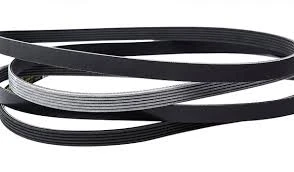- Arabic
- French
- Russian
- Spanish
- Portuguese
- Turkish
- Armenian
- English
- Albanian
- Amharic
- Azerbaijani
- Basque
- Belarusian
- Bengali
- Bosnian
- Bulgarian
- Catalan
- Cebuano
- Corsican
- Croatian
- Czech
- Danish
- Dutch
- Afrikaans
- Esperanto
- Estonian
- Finnish
- Frisian
- Galician
- Georgian
- German
- Greek
- Gujarati
- Haitian Creole
- hausa
- hawaiian
- Hebrew
- Hindi
- Miao
- Hungarian
- Icelandic
- igbo
- Indonesian
- irish
- Italian
- Japanese
- Javanese
- Kannada
- kazakh
- Khmer
- Rwandese
- Korean
- Kurdish
- Kyrgyz
- Lao
- Latin
- Latvian
- Lithuanian
- Luxembourgish
- Macedonian
- Malgashi
- Malay
- Malayalam
- Maltese
- Maori
- Marathi
- Mongolian
- Myanmar
- Nepali
- Norwegian
- Norwegian
- Occitan
- Pashto
- Persian
- Polish
- Punjabi
- Romanian
- Samoan
- Scottish Gaelic
- Serbian
- Sesotho
- Shona
- Sindhi
- Sinhala
- Slovak
- Slovenian
- Somali
- Sundanese
- Swahili
- Swedish
- Tagalog
- Tajik
- Tamil
- Tatar
- Telugu
- Thai
- Turkmen
- Ukrainian
- Urdu
- Uighur
- Uzbek
- Vietnamese
- Welsh
- Bantu
- Yiddish
- Yoruba
- Zulu
Novemba . 09, 2024 10:47 Back to list
Replacement Fan Belt 4PK for Optimal Performance in Automotive Applications
Understanding Fan Belts A Deep Dive into the 4PK Specification
When we talk about automotive maintenance, one of the unsung heroes of engine performance is the fan belt, often referred to as the serpentine belt or accessory drive belt. Among the various specifications of fan belts, the 4PK designation is particularly notable. This article delves into what 4PK means, its importance, and the factors to consider when choosing a fan belt for your vehicle.
What Does 4PK Mean?
The 4PK designation indicates a specific type of fan belt characterized by its width and rib count. The 4 signifies the number of ribs on the belt, while PK stands for Poly-V or “Poly-Vee,” denoting the design of the belt. In essence, a 4PK belt has four ribs running parallel along its length, which enables it to grip various pulleys effectively while minimizing slippage.
Poly-V belts are integral to the functioning of numerous devices in a vehicle, including the alternator, power steering pump, water pump, and air conditioning compressor. Due to their ribbed design, these belts offer a larger surface area for contact with the pulleys, enhancing their grip and efficiency.
Importance of a Quality Fan Belt
A well-functioning fan belt is crucial for optimal engine performance. It plays a vital role in transferring power from the engine to various accessories, ensuring that they operate smoothly and efficiently. A worn or damaged fan belt can lead to several issues, including
1. Overheating If the water pump is not driven adequately by the fan belt, the engine can overheat. 2. Loss of Power Steering A failing belt can affect power steering performance, making it difficult to maneuver the vehicle. 3. Failure of Electrical Components The alternator may not function properly, leading to battery drain and electrical system failures.
fan belt 4pk

Regular inspection and timely replacement of the fan belt can prevent these problems, keeping your vehicle running smoothly.
Choosing the Right 4PK Fan Belt
When selecting a 4PK fan belt for your vehicle, consider the following factors
1. Compatibility The belt must be compatible with your vehicle's make and model. Always refer to the owner’s manual or consult with a professional mechanic for the correct specifications. 2. Quality Not all fan belts are created equal. Opt for high-quality belts from reputable manufacturers to ensure longevity and reliability. Brands like Gates, Dayco, and ACDelco are known for producing durable belts that meet OEM specifications.
3. Condition of Related Components When replacing a fan belt, it's wise to also inspect related components such as the pulleys and tensioner. Worn pulleys can cause excessive wear on a new belt, while a faulty tensioner may not maintain the correct tension, leading to premature belt failure.
4. Installation Correct installation is key to ensuring the fan belt operates effectively. If you're not comfortable installing it yourself, seek the assistance of a professional mechanic. An incorrectly installed belt can lead to misalignment and premature wear.
Conclusion
Understanding the significance of a 4PK fan belt is essential for vehicle maintenance enthusiasts and everyday car owners alike. This seemingly small component plays a critical role in the overall functioning of your vehicle's engine and accessories. By ensuring that you choose the right belt, maintain the correct installation, and regularly check its condition, you can extend its lifespan and prevent potentially costly repairs down the road. Regular maintenance and attention to detail can keep your vehicle running smoothly and efficiently, ensuring that your journeys are safe and hassle-free.
-
Upgrade Power Steering Pump Belt for Smooth, Quiet Operation
NewsAug.27,2025
-
Precision Timing Belt & Chain: Engine Performance & Durability
NewsAug.26,2025
-
Precision Lathe Drive Belts: Durable & Reliable Performance
NewsAug.25,2025
-
84.5 Serpentine Belt: Durable & Precision Fit for Your Engine
NewsAug.24,2025
-
Premium Ribbed Drive Belts for Quiet Power Transmission
NewsAug.23,2025
-
High-Performance Vehicle Timing Belt for Engine Precision
NewsAug.22,2025

